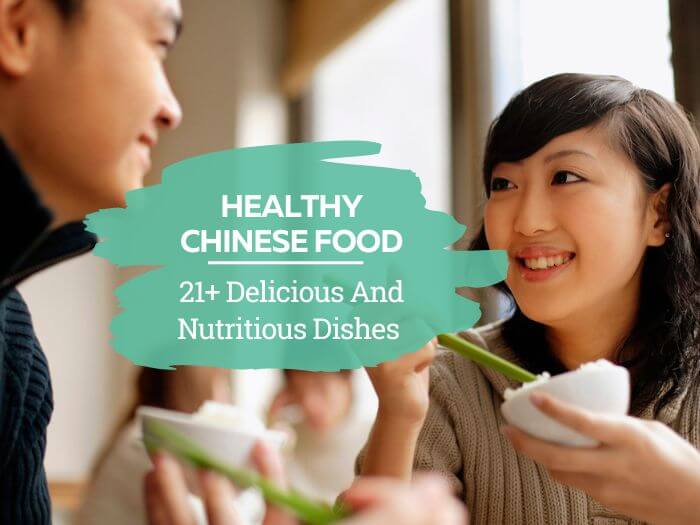China is undoubtedly blessed with one of the world’s greatest and most varied cuisines. Indeed, the Chinese themselves consider their culinary tradition to consist of eight main styles, the so-called 八大菜系 bā dà cài xì, the Eight Great Cuisines.
Beyond this, every region and even small town seems to have its own local speciality. And as a result, any trip to China will be an eye-opening, mouth-watering journey of culinary discovery.
However, you might want to watch your weight or avoid certain unhealthy ingredients – all while still enjoying the best that Chinese cuisine has to offer.
To help with this dilemma, in this post, I discuss healthy Chinese food to give you an idea of some of the things to look out for.
Pro Tip
By the way, if you want to learn Chinese fast and have fun, my top recommendation is Chinese Uncovered which teaches you through StoryLearning®.
With Chinese Uncovered you’ll use my unique StoryLearning® method to learn Chinese through story…not rules. It’s as fun as it is effective. If you’re ready to get started, click here for a 7-day FREE trial.
Table of Contents
A Nation Of Food Lovers
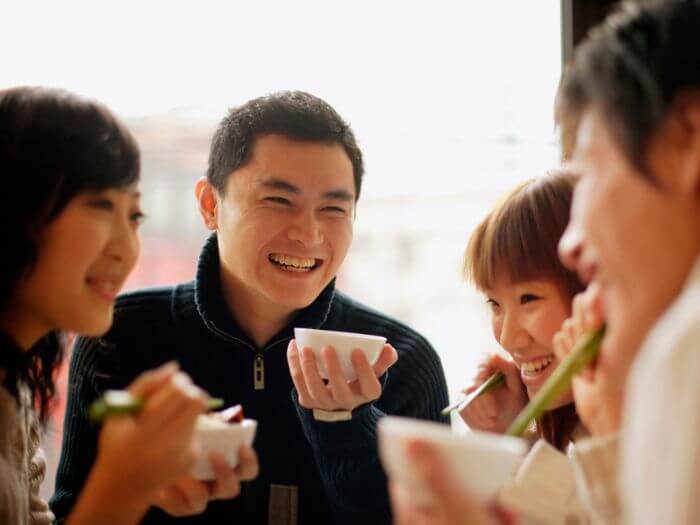
The Chinese love their food, and it’s hard to imagine a nation that’s more obsessed with eating – something you can hardly blame them for when there’s such a vast array of tasty dishes and local snacks to sample.
This passion for eating is deeply ingrained in the Chinese psyche and is reflected in Chinese expressions like 口福 kŏufú, something we have no equivalent for in English but that can be translated as “good luck in finding delicious food”.
Indeed, a common Chinese greeting is 你吃饭了吗? nĭ chī fàn le ma? Although this literally means “have you eaten?”, it is more akin to saying “how are you?” in English. Not enquiring if someone has eaten can be seen as showing a lack of regard for the other person.
However, you might be forgiven for thinking that lots of Chinese food is not exactly that healthy, so let’s look at why this could be.
Too Oily?
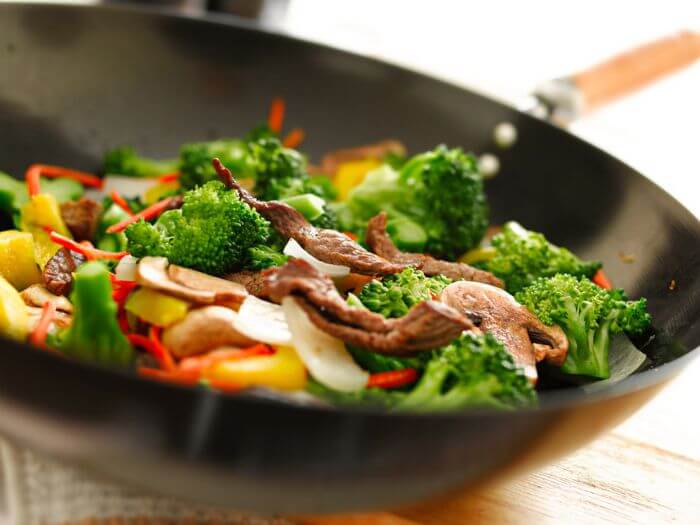
In China, many dishes are cooked using methods like 炒 chăo and 清炒 qīngchăo (two different techniques we would call stir-frying in English), 煎 jiān (shallow-frying without stirring) and 炸 zhā (deep-frying).
These are all cooking methods that produce dishes that can be too 油腻 yóunì (oily), and when I first travelled in China, this was the impression I often had.
However, as a Chinese friend recently pointed out to me, with many dishes, the oil ends up in the bottom of the plate, so you don’t eat it. This is in contrast with something like American fried chicken where a good proportion of the oil is consumed along with the meat.
That said, other cooking methods exist too. For example, dishes that employ techniques like 蒸 zhēng (steaming) and 煮 zhŭ (boiling) are often more 清淡 qīngdàn (light).
Salt And MSG
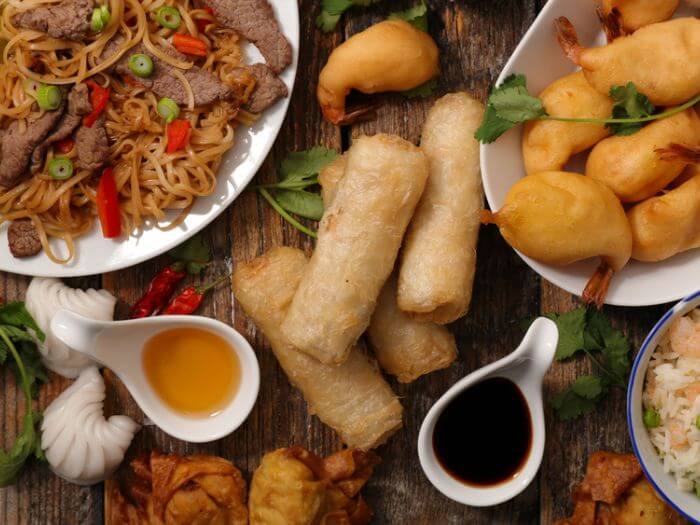
if you're going to China, you might also be worried about the overuse of 盐 yán (salt), although in my experience, if a dish is too 咸 xián (salty), it’s more likely to be due to an unskilled cook rather than something demanded by the recipe.
In any case, if you often find Chinese food too salty, you can always say 不要太咸 bú yào tài xián (not too salty) when ordering.
Another issue for some visitors to China is味精 wèijīng – MSG or monosodium glutamate.
Some say that MSG is extremely bad for your health, and it’s something lots of Western travellers seem to be especially squeamish about.
It’s true that the use of MSG is prevalent in China – and its other name, “gourmet powder”, gives you a clue as to why since it certainly helps add extra layers of flavour to food.
There’s actually a counter-argument that says MSG is not as bad for you as many people think, especially if you just eat it for a week or two while travelling in China before going home again.
However, if you really don’t want to consume any MSG, you can always say to the waiter 不要放味精 bú yào fàng wèijīng (don’t use MSG), and hopefully the cook will get the message.
A Huge Variety Of Healthy Ingredients
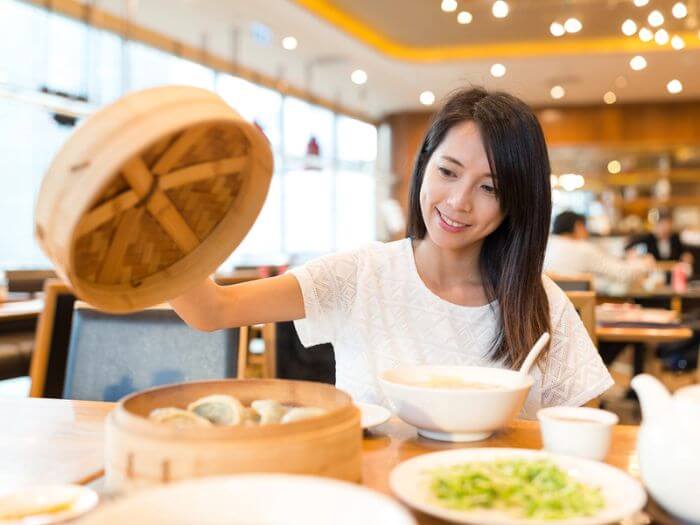
Oil, salt and MSG aside, one thing that Chinese food has going for it is the huge range of ingredients it incorporates, which includes a much more varied array of vegetables than we are used to in many Western countries.
Furthermore, Chinese meals are generally shared, and the goal when choosing the dishes is to create a kind of harmony with what you order, so you can expect, for example, one spicy dish, one salty dish, one sweet dish, one dish with meat, one with fish and so on.
Depending on how many people are eating and how many dishes you order, you can usually expect at least a couple of vegetable or tofu dishes, and this way of eating ensures a healthy and balanced diet.
Many ingredients and dishes are also prized for their role in traditional Chinese medicine, which takes a holistic, preventative approach rather than a reactive and remedial one.
This all means Chinese food, despite first impressions, can actually be very balanced and healthy – as long as you don’t overindulge.
Add to this the green tea that traditionally accompanies meals – which serves to wash it all down and aid with digestion – and your experience of eating in China is likely to be far from unhealthy.
Healthy Chinese Food: Mains
Having said that, there are certainly plenty of less healthy things you can eat there too. So to give you an idea of some of healthy Chinese food, here’s a small selection of the kind of dishes to choose if you’re concerned about clean living.
1. Hainan Chicken Rice 海南鸡饭 hăinán jī fàn
Originally from the southern island of Hainan where it’s mostly found, this dish is also now popular in several Southeast Asian countries like Malaysia, Thailand and especially Singapore.
It’s a simple yet delicious meal consisting of boiled and simmered chicken served with broth, steamed rice and a dipping sauce.
Since it’s not cooked in oil, it’s a light and healthy meal that won’t leave you feeling bloated or lethargic after eating it.
Similar to Hainan chicken is 白斩鸡 báizhănjī, sometimes known in English as “white cut chicken”. It consists of boiled or poached chicken served cold with soy sauce. It was originally a Cantonese dish but is now available throughout the country.
2. Steamed Fish With Ginger 清蒸鱼 qīngzhēngyú
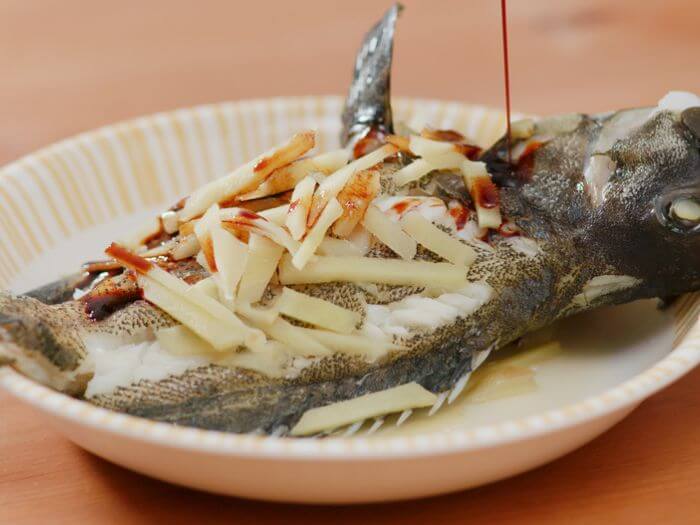
A popular cooking method in China is steaming, which is done in special bamboo baskets known as 笼 lóng. This is among the healthiest ways to cook food, producing light and flavourful dishes that are easy to eat.
On menus, look out for 清蒸鱼 qīngzhēngyú, a dish that usually involves steaming a whole fish with ginger and a few other light flavourings, with delicious results.
Again, this is especially popular in Cantonese cooking but can also be found just about everywhere else in the country.
For the uninitiated, tackling a whole steamed fish using chopsticks when you’re not used to it is quite another matter.
3. Northern-Style Hotpot 涮锅 shuànguō
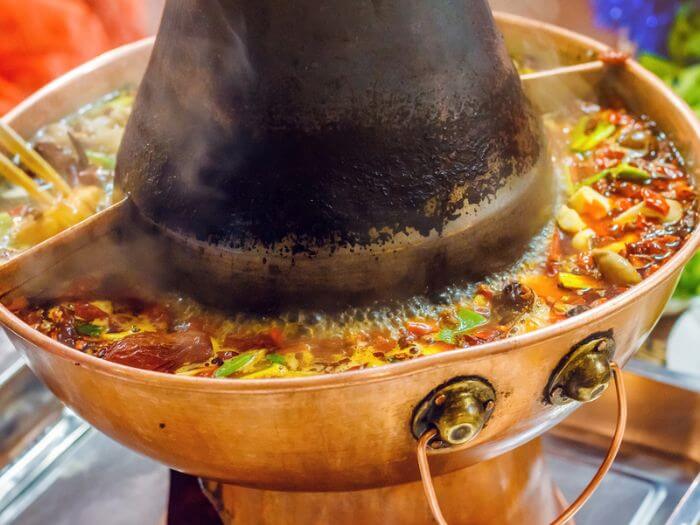
Sichuan province and Chongqing are famed for the spicy hotpot that originates there and that is now enjoyed throughout China.
Personally, it’s one of the things I miss most because it’s not easy to find outside of the country.
However, the broth used for that type of hotpot is very oily, which means it isn’t such a healthy option. Northern-style hotpot, however, is a different matter.
Traditionally for this meal, a special pot with a central chimney and a circular section around the outside for the broth is placed on the table. Heated stones are then placed inside it to keep the broth piping hot – although electric versions with no chimney now also exist.
Diners then place slices of meat, vegetables, noodles and other ingredients in the broth and cook them at the table.
Since the broth is much lighter than the one used for Sichuan and Chongqing hotpot, this version is not as heavy. You can also order plenty of healthy veggies and lean meat, giving you total control over what you eat.
This meal is popular in Beijing, so it’s a great option for anyone visiting the capital.
4. Braised Chicken With Brown Sauce 黄焖鸡 huáng mèn jī
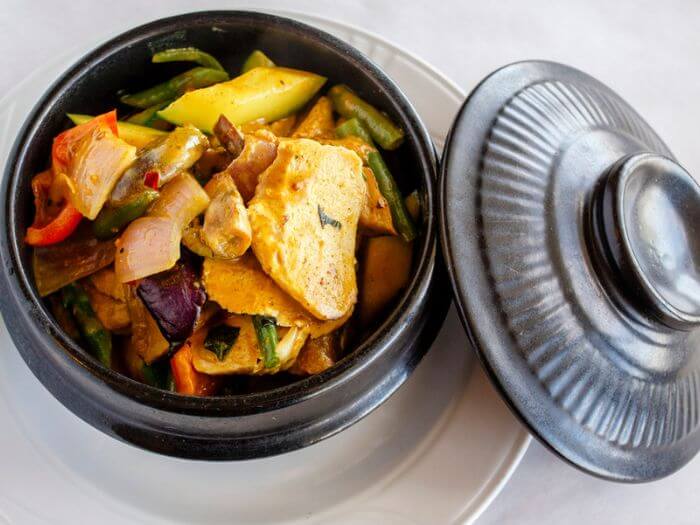
One of the healthier ways of preparing food in China is cooking in a clay pot, because food cooked this way doesn’t tend to include too much oil. It also has the advantage of creating deliciously tender pieces of meat.
One example of this could be 黄焖鸡 huáng mèn jī (braised chicken with brown sauce), a relatively simple dish of chicken and vegetables.
Since there is little oil in the dish, it’s not as unhealthy as many others. However, it’s still quite rich and calorie-heavy, so if you’re on a diet, you might not want to eat too much of it.
If this dish is not available, similar clay-pot dishes may be on the menu instead, and they're also worth trying.
5. Lotus Pond Stir Fry 荷塘小炒 hétáng xiăochăo
The imaginatively named lotus pond stir fry incorporates many healthy vegetables including snow peas and lotus roots that are quickly stir-fried together to create a healthy dish that’s as delicious as it is nutritious.
6. Mixed Stir Fry With Shelled Prawns 什锦炒虾仁 shíjĭn chăo xiārén
Similar to lotus pond stir fry, this dish consists of an assortment of vegetables stir-fried with shelled prawns – another tasty yet healthy option that can be ordered alongside heavier dishes to bring balance to your table.
7. Mapo Tofu 麻婆豆腐 mápó dòufu
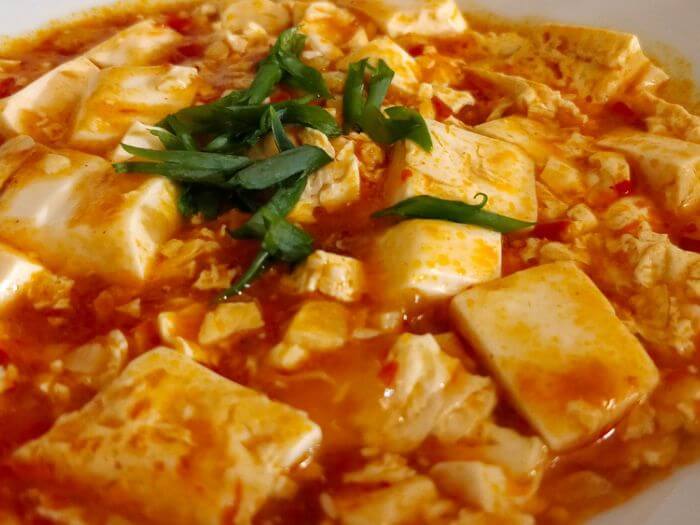
This may be a controversial inclusion on my list since, as a dish that’s often quite oily, it’s perhaps not the healthiest option I could have chosen.
However, since the main ingredient is tofu, a healthy and nutritious source of protein, I still decided to include it – especially because it’s a dish I’m particularly fond of.
Mapo tofu is from Sichuan, and as such, it contains plenty of chilli along with the obligatory Sichuan peppercorns.
It’s supposedly named after a pockmarked old lady who first served the dish in Chengdu – the 麻 má in the name is short for 麻子 mázi (pockmark) and 婆 pó is short for 婆婆 pópo (grandma).
Of course, if you can’t stand the spiciness or the 麻辣 málà (spicy and numbing) flavour of this dish – or you just want something a little less oily – there will usually be plenty of other tofu-based dishes on the menu to choose from.
8. Stir-Fried Shredded Potato 土豆丝 tŭdòusī
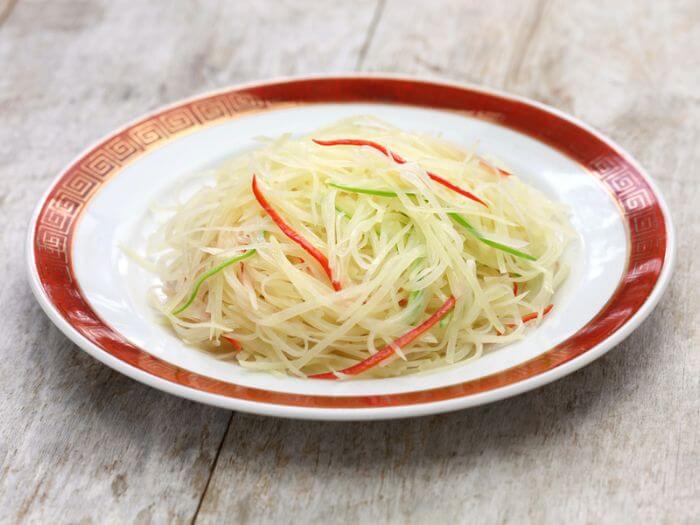
A simple dish that’s pretty much summed up by its name in English – it consists of shredded potato lightly stir-fried, usually with a few pieces of chilli to give it some flavour.
In Chinese, the name is more poetic – it means “potato silk”.
9. Cucumber Salad 凉拌黄瓜 liángbàn huángguā
This dish would be considered more of a side dish except that the concept of sides doesn’t really exist in the context of Chinese meals.
It’s a simple dish of pieces of cold cucumber dressed with a sauce that includes chilli and garlic. It’s the kind of thing you would order as part of a larger meal to complement other heavier dishes that might be on the table.
10. Beef Noodle Soup 牛肉面 niúròu miàn
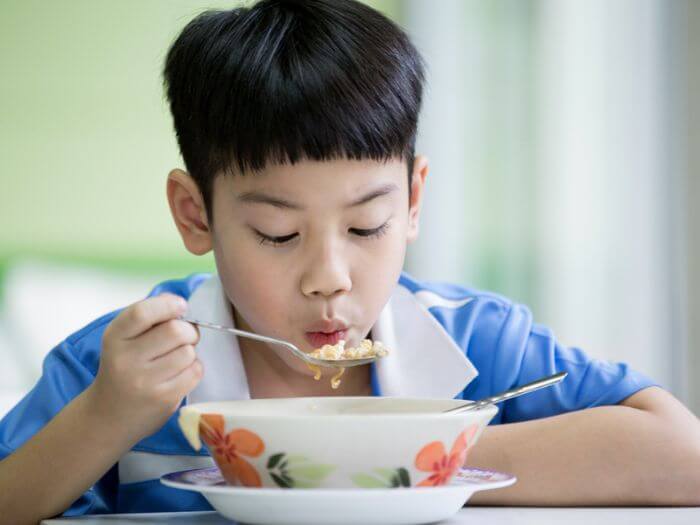
Although most Chinese meals are supposed to be enjoyed in company, there may be times when you need to order a single-dish meal for yourself.
On such occasions, you might imagine that fried noodles or fried rice are common options – and these can most certainly be found. But a more popular choice in China would be 牛肉面 niúròu miàn (beef noodle soup).
Since the noodles and beef are served in broth rather than fried, it’s lighter and healthier than fried dishes.
Be aware, though, that the beef itself may be fatty or grisly and not the kind of thing you’re used to eating back home. This is also the kind of meal that is likely to have quite a bit of salt and MSG in it unless you tell the server otherwise.
11. Soups 汤类 tāng lèi
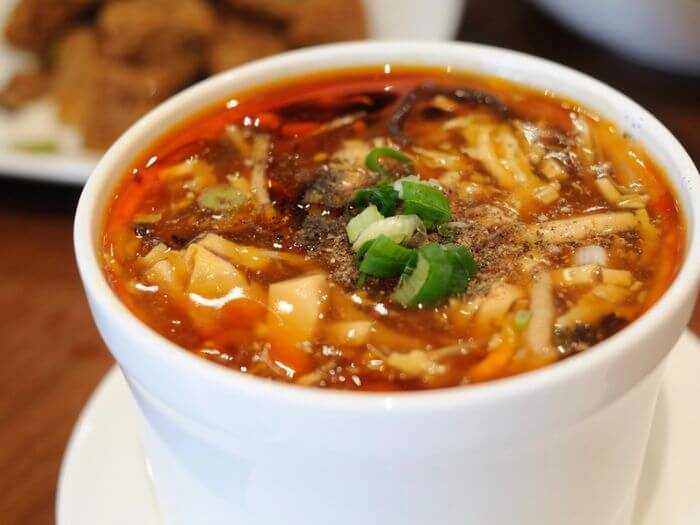
Chinese meals are often accompanied by 烫tāng (soup), and many are light and healthy – if sometimes a little salty.
One very simple type of soup is 蛋花汤 dànhuātāng, known as either egg drop soup or egg flower soup in English. It consists of eggs beaten in chicken broth and is neither calorific nor heavy.
A personal favourite of mine is 酸辣汤 suānlàtāng (hot and sour soup), a dish that can often be found in Chinese restaurants in the West but that’s infinitely better in China.
Note that the Chinese use the word 喝 hē (drink) rather than 吃 chī (eat) for consuming soup – although you still do it with a spoon in exactly the same way as you would anywhere else!
12. Steamed Or Boiled Dumplings 蒸饺、煮饺 zhēngjiăo、zhŭjiăo
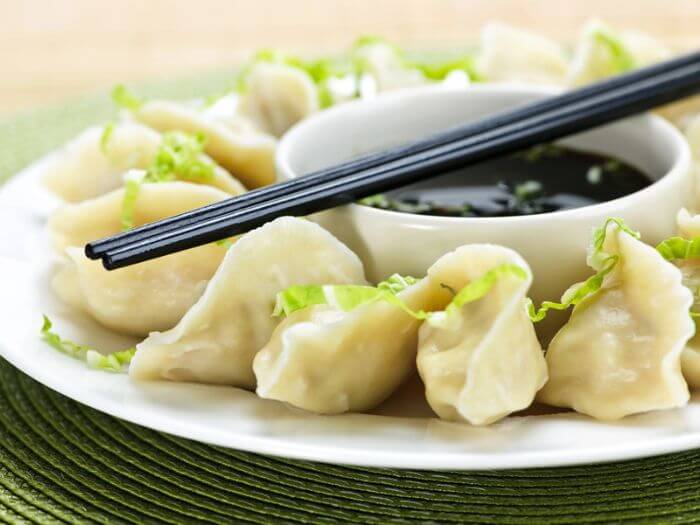
Chinese dumplings are inexpensive and delicious, and the country has a huge variety for you to sample.
Not all of them are healthy since some are fried in oil. But either boiled or steamed dumplings are healthy treats that you can enjoy with little guilt.
The most basic versions usually contain pork meat – but many more upmarket establishments offer a wide range of fillings, and even some street vendors sell a few more interesting options.
Vegetarians will find themselves catered for too. For example, tomato and egg dumplings are available, something that tastes far better than their slightly uninspiring contents might suggest.
Healthy Chinese Food: Snacks
China has countless 小吃 xiăochī (snacks), and everywhere you go, you’ll find different specialities to try.
Here are a few to look out for that are quite healthy – although again, every region has all kinds of local treats, some of which are healthy and others that are much less so.
13. Tea Eggs 茶叶蛋 cháyèdàn
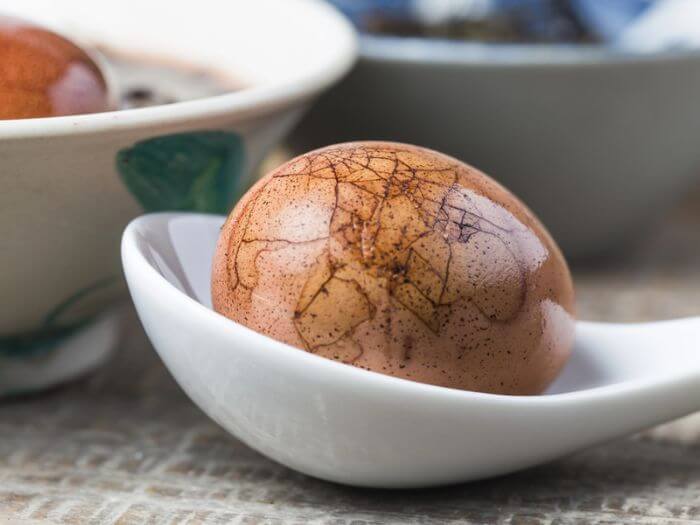
A simple and incredibly cheap snack that you will often come across in the street, tea eggs are eggs that have been cracked and then boiled in a tea and soy mixture.
You then simply peel the egg and eat it as it is – they have a mottled appearance, and the tea and soy mixture adds an extra level of flavour to the simple boiled egg.
14. Salted Boiled Soybean Pods 盐水毛豆 yánshuĭ máodòu
Often enjoyed with a few glasses of beer while waiting for sticks of street barbecue you’ve just ordered, salted boiled soybean pods are a relatively healthy snack – apart from the salt added to the water to cook them.
They arrive in bowls, and you simply remove the beans from the pods and pop them into your mouth. They go perfectly with beer in much the same way a bowl of peanuts would.
15. Steamed Egg Custard 蒸鸡蛋羹zhēng jīdàn gēng
This version of egg custard is usually savoury and may sometimes be served with things like spring onion, coriander or pieces of meat as a garnish to give a little extra colour and flavour.
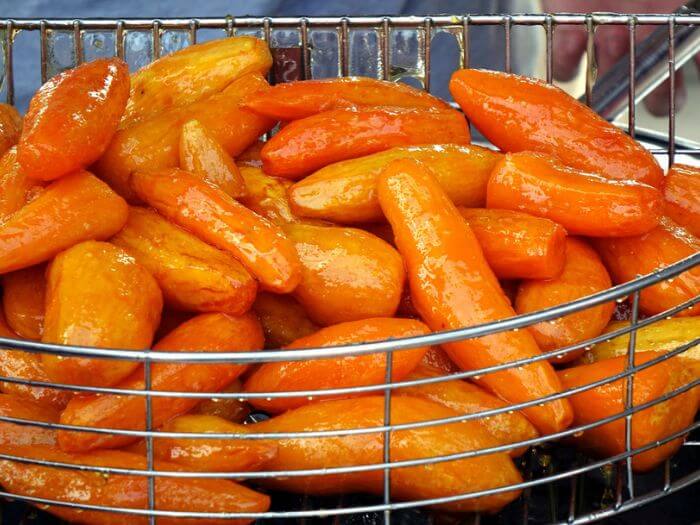
16. Baked Sweet Potato 烤红薯 kăo hóngshŭ
A simple, healthy snack that’s sold in the street everywhere for very little money. All you do is peel off the skin and eat it – it’s great at any time of the year, but especially during the colder months.
17. Rice Porridge/Congee 粥 zhōu
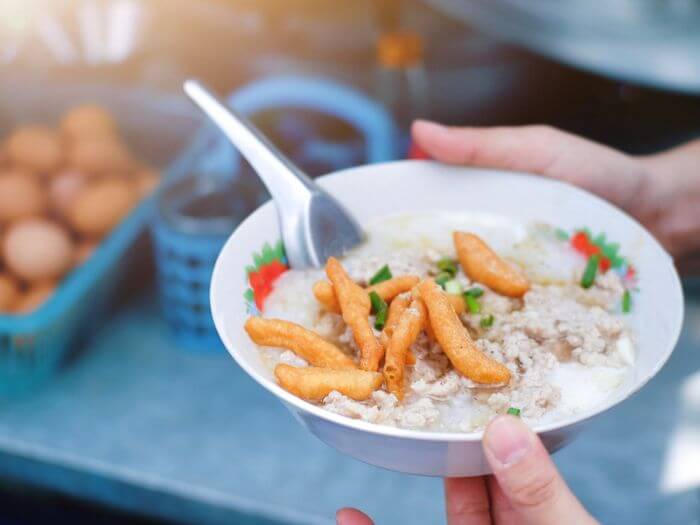
Rice porridge or congee is a simple dish made by boiling rice until it begins to soften and break apart. It can be eaten at any time of the day, but it's especially popular for breakfast.
Congee on its own is healthy since it doesn’t require any oil or other unhealthy ingredients to make it. Other items are often then added for flavour, and they also tend to be relatively healthy.
However, for breakfast, it's also commonly eaten with 油条 yóutiáo, deep-fried dough sticks – something that can’t be considered healthy by any stretch of the imagination!
Healthy Chinese Food: Fruit
One thing I’ve always enjoyed about spending time in China is that food vendors sell what’s in season locally instead of importing food from the far corners of the world throughout the year.
There’s always a selection of fresh vegetables on sale in markets. And the various fruits that become available with the changing seasons are a particular delight – some of which you might not be familiar with.
This means while in China, you should make a point of sampling whatever local fruit is currently on offer.
In addition, you may also come across more exotic fruits imported from Southeast Asia like 山竹 shānzhú (mangosteen), 红毛丹 hóngmáodān (rambutan) and 榴莲 liúlián (durian). These are all worth trying too, especially if you’ve never been to the places they come from.
Here are some fruits that are typically associated with China that you shouldn’t miss.
18. Lychee 荔枝 lìzhī
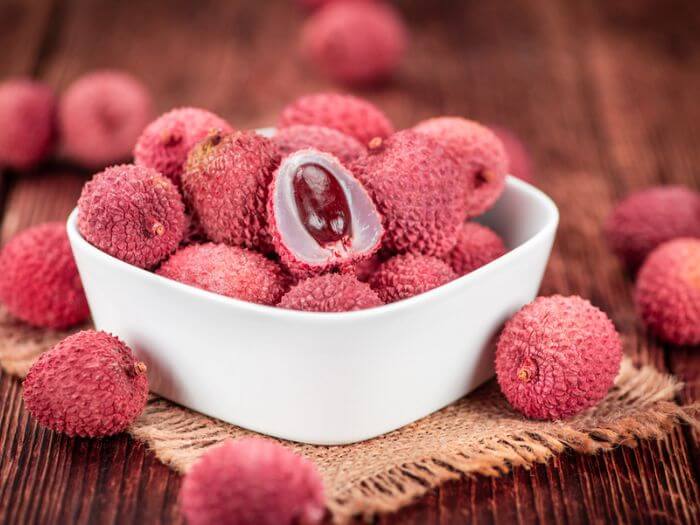
Lychees are native to southern China as well as parts of Vietnam and Cambodia – and China is the world’s main commercial producer.
When they're in season, they become available in markets throughout the country and sell for incredibly reasonable prices. They are juicy with a delicious light flavour – and in China, they're far superior to any I have ever tasted elsewhere.
19. Chinese Strawberry 杨梅 yángméi
杨梅 yángméi, a fruit often called “Chinese strawberry”, can sometimes be found in Chinese restaurants in the UK in tinned form to be served as a dessert with ice cream.
However, this version is nothing like eating them fresh, and if you see them in China, you should make sure you sample them.
They are now also being grown on a small scale in California, so some American readers may have already come across them back home.
20. Green Orange 清香橘 qīngxiāngjú
Once when I was in China, I found myself confused when I saw people on a train peeling and devouring what I thought were limes. Later, I discovered that what they were eating were oranges – but with green skins.
Subsequently, when I found some in a market, I bought some for myself – and found them to be sweet and delicious, making them another unusual fruit I can recommend.
21. Longan 龙眼 longyan
Longans are similar to lychees but are smaller, yellow-brown in colour and have a slightly nuttier taste.
They are native to the south of China and other tropical parts of Asia – when they are in season, you can find them in most parts of the country but especially in the south.
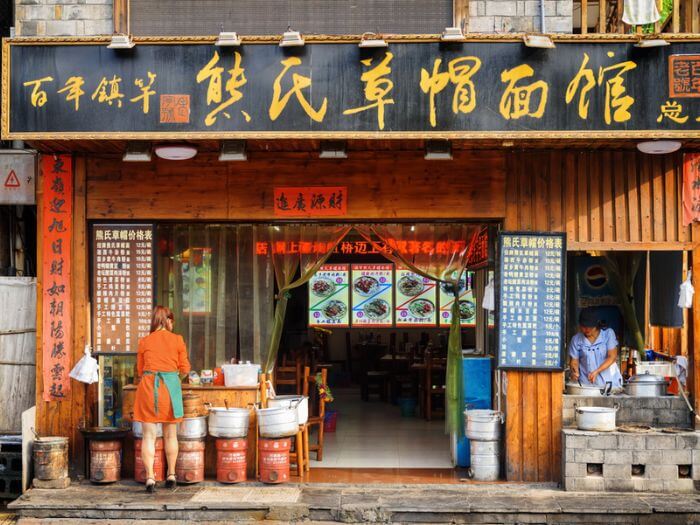
FAQs About Healthy Chinese Food
What is the healthiest Chinese food to order?
Here are 12 healthy Chinese dishes you can order.
1. Hainan chicken rice – a simple yet delicious meal consisting of boiled and simmered chicken served with broth, steamed rice and a dipping sauce.
2. Steamed fish with ginger – a dish that usually involves steaming a whole fish with ginger and a few other light flavourings, with delicious results.
3. Northern-style hotpot – a hotpot with much lighter broth than the Sichuan version which is rather oily.
4. Braised chicken with brown sauce – dishes like this which are cooked in a clay pot tend to be healthier as they're less oily.
5. Lotus pond stir fry – this dish incorporates many healthy vegetables that are quickly stir-fried together.
6. Mixed stir fry with shelled prawns – this dish consists of an assortment of vegetables stir-fried with shelled prawns.
7. Mapo Tofu – Although this dish is often quite oily, the main ingredient is tofu, a healthy and nutritious source of protein.
8. Stir-fried shredded potato – a dish of shredded potato which is lightly stir-fried, usually with a few pieces of chilli.
9. Cucumber salad – a simple dish of pieces of cold cucumber dressed with a sauce that includes chilli and garlic.
10. Beef noodle soup – noodles and beef that are served in broth rather than fried (watch out for the salt and MSG though).
11. Soups – many Chinese soups like egg drop soup or hot and sour soup are light and healthy, if a little salty.
12. Steamed or boiled dumplings – Boiled or steamed dumplings, as opposed to fried ones, are healthy treats.
What Chinese takeaway food is healthy?
Chinese takeaway dishes that are steamed or boiled rather than fried are much healthier options.
Examples include steamed or boiled dumplings and various Chinese soups such as beef noodle soup, egg flower soup or hot and sour soup.
You can also choose stir-fried dishes that consist mainly of vegetables such as mixed stir fry with shelled prawns.
What are the healthiest dishes to get from Chinese?
Opt for steamed dumplings, bok choy stir-fry, chicken with broccoli, or steamed fish. Pair these with brown rice or skip the rice altogether for a lower-calorie, nutrient-rich meal. Avoid fried or heavily sauced dishes.
What Chinese meal is lowest in calories?
Dishes like steamed chicken and vegetables, soup-based meals such as wonton or miso soup, and stir-fried greens are among the lowest in calories. These options are also nutrient-dense and low in unhealthy fats.
Is Chinese food healthy for weight loss?
Yes, Chinese food can be healthy for weight loss if you focus on dishes like steamed, stir-fried, or lightly sautéed vegetables and lean proteins. Avoid fried foods, sugary sauces, and large portions of rice or noodles to keep your meal low in calories and balanced.
An Intro To Healthy Chinese Food That Only Scratches The Surface
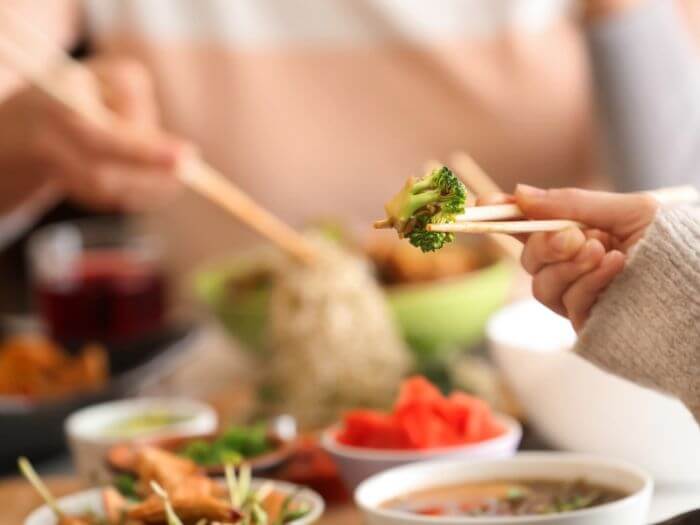
As I mentioned above, China is a country with a mind-boggling array of different foods, including many healthy dishes and a few that are much less so. As a result, the handful of dishes and other foods I’ve introduced here can barely scratch the surface of what’s available.
If you spend any time travelling in China, you’ll quickly identify your favourite go-to dishes that are sold in most restaurants. This is helpful since it’s not always easy to order if the locals don’t speak English, your Chinese is not up to standard and you can’t read in Mandarin.
However, my advice is to be adventurous and try sample as many different dishes as you can.
And even if you're concerned about eating healthily, try not to worry about it too much for the short time you’re there – because you’ll want to experience as much of China’s hugely diverse cuisine as possible before you leave.

Olly Richards
Creator of the StoryLearning® Method
Olly Richards is a renowned polyglot and language learning expert with over 15 years of experience teaching millions through his innovative StoryLearning® method. He is the creator of StoryLearning, one of the world's largest language learning blogs with 500,000+ monthly readers.
Olly has authored 30+ language learning books and courses, including the bestselling "Short Stories" series published by Teach Yourself.
When not developing new teaching methods, Richards practices what he preaches—he speaks 8 languages fluently and continues learning new ones through his own methodology.
